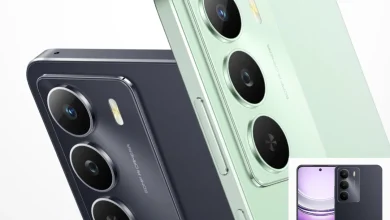Samsung Galaxy A14 Review

Galaxy A14 Review
Affordable smartphone with essential features for everyday use
The Samsung Galaxy A14 offers a balanced combination of essential features at an affordable price point. With its large display, capable camera system, and long-lasting battery, it’s designed for users who need reliable performance without breaking the bank.
Samsung Galaxy A14
Key Specifications
Key Overview
| Features | Specification |
|---|---|
| Display Size | 6.6-inch PLS LCD |
| Display Resolution | 1080 x 2408 pixels (FHD+) |
| Refresh Rate | 60Hz |
| Processor | MediaTek Helio G80 (12nm) |
| CPU Configuration | Octa-core (2×2.0 GHz Cortex-A75 & 6×1.8 GHz Cortex-A55) |
| GPU | Mali-G52 MC2 |
| RAM | 4GB/6GB |
| Storage | 64GB/128GB (expandable up to 1TB) |
| Main Camera | 50MP, f/1.8, PDAF |
| Ultra-wide Camera | 5MP, f/2.2, 123° FOV |
| Macro Camera | 2MP, f/2.4 |
| Front Camera | 13MP, f/2.0 |
| Video Recording | 1080p @ 30fps |
| Battery Capacity | 5000mAh |
| Charging | 15W wired charging |
| Operating System | Android 13 with One UI Core 5.1 |
| Security | Side-mounted fingerprint sensor, Face recognition |
| Connectivity | 4G LTE, Wi-Fi 5, Bluetooth 5.2, GPS |
| Audio | 3.5mm headphone jack, Loudspeaker |
| Colors | Black, Light Green, Dark Red, Silver |
Strengths
- Large 6.6-inch display with FHD+ resolution
- Excellent 5000mAh battery life
- Versatile triple camera system with 50MP main sensor
- Expandable storage up to 1TB via microSD
- Clean software experience with One UI Core
- 3.5mm headphone jack included
- Side-mounted fingerprint sensor for quick access
- Affordable price point
Limitations
- 60Hz refresh rate feels dated compared to competitors
- 15W charging is slow for the battery size
- No 5G connectivity
- Plastic build feels less premium
- Performance may lag with intensive tasks
- No ultra-wideband or NFC support
- Macro camera has limited practical use
Final Verdict
The Samsung Galaxy A14 positions itself as a reliable budget smartphone that covers the essentials without unnecessary frills. The 6.6-inch PLS LCD display offers adequate viewing experience for media consumption and daily tasks, though the 60Hz refresh rate may feel less smooth compared to devices with higher refresh rates. The FHD+ resolution ensures reasonable sharpness for text and images.
Performance from the MediaTek Helio G80 processor is sufficient for everyday tasks like social media, web browsing, and light app usage. The 4GB/6GB RAM options provide basic multitasking capability, while the expandable storage ensures you won’t run out of space for photos and media. The 5000mAh battery is the standout feature, easily providing all-day usage and even extending to two days with moderate use.
The camera system offers versatility with its triple-camera setup, though the 2MP macro camera has limited practical utility. The 50MP main sensor captures decent photos in good lighting conditions, while the 5MP ultra-wide expands your framing options. The 13MP front camera is adequate for video calls and selfies. The inclusion of a 3.5mm headphone jack will be appreciated by users who prefer wired audio accessories.
Overall, the Samsung Galaxy A14 delivers solid value for budget-conscious users who prioritize battery life and display size over premium features. While it makes expected compromises in performance, charging speed, and display refresh rate, it excels in providing the essential smartphone experience at an accessible price point. If you need a reliable device for basic tasks with excellent battery endurance, the Galaxy A14 is a sensible choice in the competitive budget segment.
Disclaimer: This review is based on official specifications for the Samsung Galaxy A14. Actual user experience may vary based on individual usage patterns, regional variations, and software updates.




